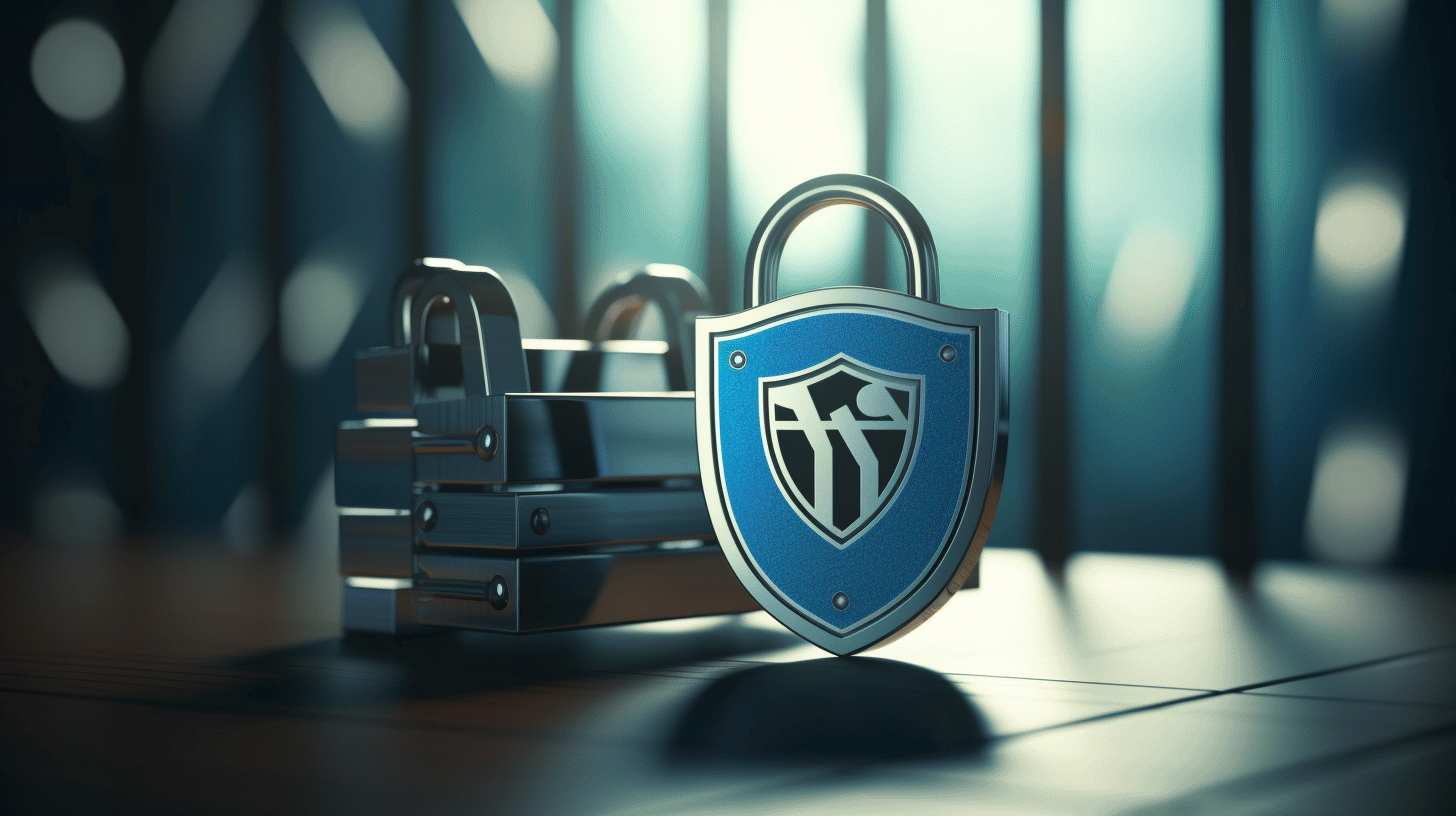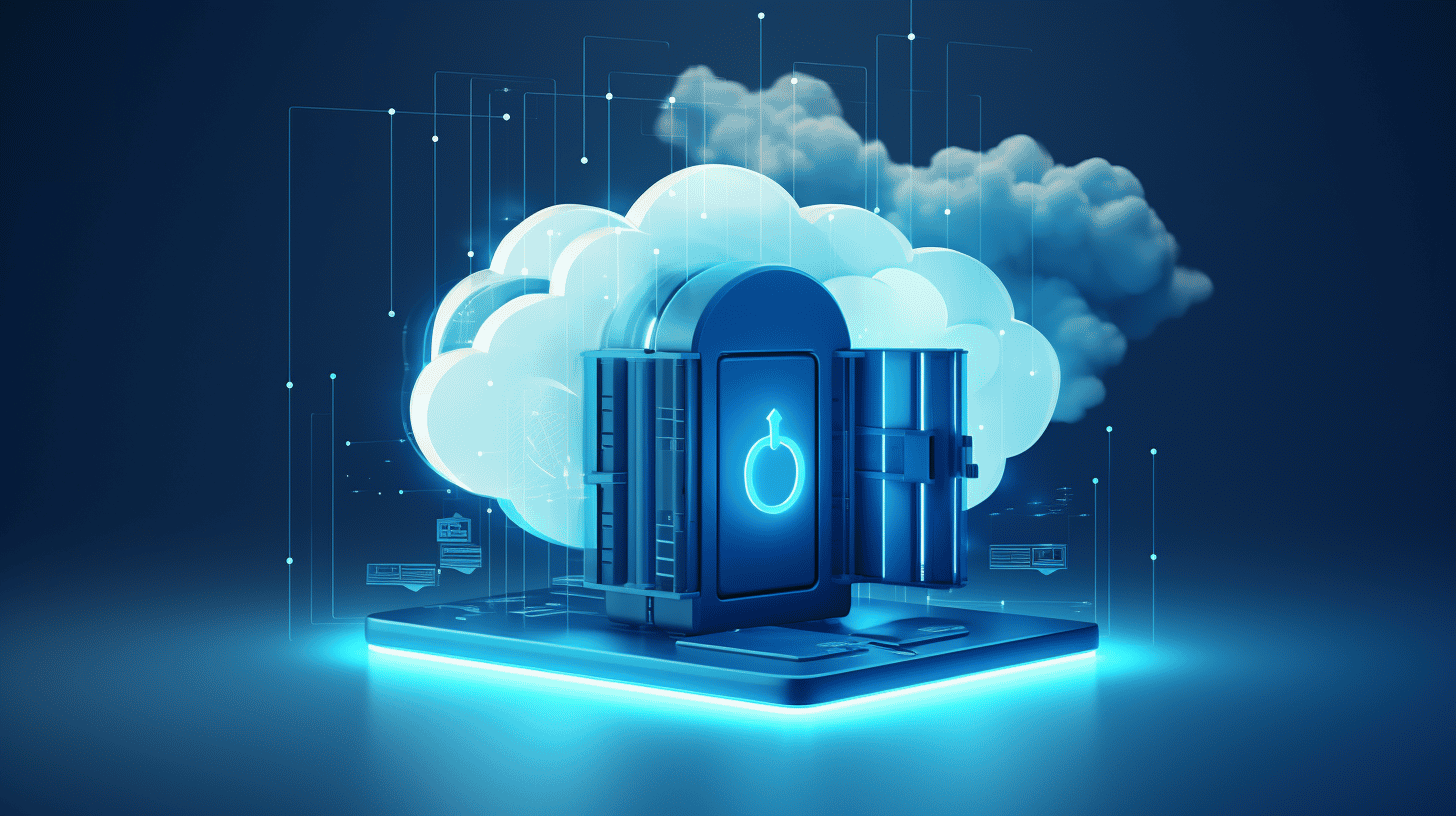在当今的数字环境中,网站安全至关重要。随着网络威胁的不断演变,网站所有者必须采取主动措施保护其在线资产。对于 WordPress 用户来说尤其如此,因为 WordPress 为互联网的 35% 提供支持,使其成为网络犯罪分子的诱人目标。
在本文中,我们将深入探讨网站安全领域,并为 WordPress 用户提供基本提示,以最大限度地提高其网站安全性。无论您是小企业主、博主还是电子商务企业家,这些提示都将有助于保护您的网站并保护其免受潜在威胁。
因此,系好安全带,准备好加强您的 WordPress 网站,抵御可能危害您的数据、声誉和在线业务的网络攻击。让我们开始吧!👊
网络犯罪统计数据概述
想象一下,一个网络犯罪猖獗的世界,对企业和个人都构成威胁。这种不幸的现实比我们想象的更为普遍。网络犯罪,即通过使用计算机或互联网进行的任何犯罪活动,已成为全球迫切关注的问题。在本节中,我们将探讨一些令人大开眼界的网络犯罪统计数据,以阐明这一日益严重的问题的范围和影响。
网络犯罪的全球成本
网络犯罪的代价高昂,这已不是什么秘密。事实上,据估计,到 2023 年,网络犯罪每年将给企业造成高达 $10.5 万亿美元的损失[1](https://www.thomasnet.com/articles/other/how-much-money-does-cybercrime-cost-the-economy/)这个令人难以置信的数字凸显了世界各地的组织(从小型企业到跨国公司)所面临的巨大财务负担。
网络安全行业的增长
随着网络威胁的不断演变,对强大网络安全措施的需求也在不断增加。为了打击日益猖獗的网络犯罪,网络安全行业取得了显著增长。目前,全球约有 550 万人受雇于该行业[2](https://www.cisco.com/c/en/us/products/security/security-reports.html)。这些网络安全专家不知疲倦地工作,以保护网络、系统和数据免受恶意行为者的攻击。
网络攻击的频率和影响
想想网络攻击发生的频率,真是令人震惊。平均而言,网站每天遭受 94 次攻击[3](https://www.securitymagazine.com/articles/95291-global-rate-of-cyberattacks-increased-by-353-in-one-year)。这意味着,当您正在享用早晨的咖啡时,世界各地正在发生无数试图破坏网站安全的攻击。这些攻击可能会造成深远的后果,包括经济损失、声誉受损,甚至法律后果。
系统入侵趋势
系统入侵(未经授权的个人访问计算机系统和网络)一直在增加。2016 年,报告的系统入侵百分比为 14%。快进到 2023 年,这一数字几乎翻了一番,达到 30%[4](https://resources.forescout.com/wbr-2020-global-impact-report-americas?cid=7015G0000019gxSQAQ&utm_campaign=2020us-ww-wbrgim-americas-paidsearch-dac&utm_medium=Paid%20Search&utm_source=google&utm_content=brand&gclid=CjwKCAjwhYOFBhBkEiwASF3KM1IevfLFkpBtoHtHum7ln7Hyfn_eI2VX3pWkTQ7PhR95-xxRW3HNpRoCLC0QAvD_BwE)。这一大幅增长凸显了采取强有力的网络安全措施来保护敏感信息和防止未经授权的访问的必要性。
数据泄露成本
网络犯罪最严重的后果之一是数据泄露。2023 年,全球数据泄露的平均成本达到惊人的 $4.45 万美元[5](https://www.ibm.com/security/digital-assets/cost-data-breach-report/#/)。这意味着在短短三年内就增加了 15%。这些成本考虑了各种因素,包括事件响应、业务损失和潜在的法律后果。
掌控您的网站安全
在日益数字化的世界里,保护您的在线形象至关重要。网络犯罪的后果可能是毁灭性的,无论是经济上还是声誉上。要了解有关增强网站安全性的步骤的更多信息,请查看“掌握网站安全”综合指南[6](https://managed-wp.com/blogs/mastering-website-security-protect-your-business-with-managed-hosting/)。它提供了宝贵的见解和实用技巧,以保护您的企业免受日益增长的网络犯罪威胁。
最脆弱行业
在当今的数字时代,网络威胁普遍存在且不断演变。没有哪个行业能够免受这些攻击,但某些行业尤其容易受到攻击。本节将探讨已成为网络犯罪分子主要目标的两个行业:金融业和教育机构。
金融领域
金融行业(包括银行、保险公司和投资公司)因其拥有大量敏感财务数据而成为网络攻击的热门目标。以下是一些需要考虑的关键点:
- 🎯 根据行业报告,金融行业是遭受网络攻击的第二大行业,仅次于医疗保健行业。
- 💸 这些攻击背后的动机往往是为了经济利益。网络犯罪分子的目标是利用漏洞,未经授权访问金融系统或窃取有价值的客户信息。
- 🚫 网络钓鱼活动是针对金融部门的常用手段。这些活动试图诱骗个人泄露机密信息,例如登录凭据或财务详细信息。
- 🛡️为了应对这些威胁,金融机构在网络安全措施方面投入了大量资金,包括强加密、多因素身份验证和强大的防火墙。
- 🌐 客户必须保持警惕并采取必要的预防措施,例如定期更新密码、不通过不安全的渠道共享敏感信息以及警惕可疑的电子邮件或电话。
教育机构
当想到网络攻击时,人们可能不会立即想到教育机构,包括学校、学院和大学。然而,这些机构拥有宝贵的数据,因此成为有吸引力的目标。以下是您需要了解的内容:
- 🎯 针对教育机构的数字攻击日益增多,对学生和机构本身都产生了严重影响。
- 🏫 在最近进行的一项研究中 来源研究发现,针对教育机构的攻击中有 29% 源自漏洞利用,而 30% 则是网络钓鱼活动的结果。
- 🔑 漏洞利用涉及利用教育机构使用的软件或系统中的弱点,允许黑客未经授权访问学生记录、个人信息甚至财务数据。
- 💌 针对教育机构的网络钓鱼活动通常通过冒充学校或教育组织等可信来源来收集敏感信息,例如用户名、密码或财务详细信息。
- 🛡️ 教育机构正在采取措施加强其网络安全协议。这包括定期软件更新、对员工进行安全最佳实践培训以及实施强大的威胁检测和预防系统。
总体而言,金融行业和教育机构必须时刻警惕网络威胁。通过投资于强大的网络安全措施并教育用户了解潜在风险,这些行业可以更好地保护自己及其利益相关者免受网络攻击的侵害。
网站网络安全威胁的普遍性
🔒 介绍 🔒
在当今的数字时代,网站已成为我们生活中不可或缺的一部分。从在线购物到社交网络,我们依靠网站实现各种目的。然而,随着网络环境的增长,针对这些网站的网络安全威胁也显著增加。了解这些威胁的普遍性至关重要,以便采取适当措施保护我们自己和我们的在线资产。
🕵️♀️ 网络安全威胁的现实 🕵️♀️
最近的研究揭示了一些有关网站网络安全威胁普遍性的令人震惊的统计数据。一项研究发现,多达 18% 个网站被发现包含严重的网络安全威胁[数据1]。这意味着近五分之一的网站可能存在网络犯罪分子可以利用的漏洞。这些威胁对访问这些网站的用户的安全和隐私构成了重大风险。
📈 最常见的网络安全威胁类型 📈
为了有效打击网络安全威胁,必须了解网站面临的最常见威胁类型。以下是几个例子:
- 恶意软件 🦠:恶意软件(例如病毒、蠕虫或勒索软件)可能会感染网站并危及网站安全。恶意软件可以通过受感染的文件或链接进行传播,以毫无戒心的访问者为目标。
- 网络钓鱼攻击 🎣:网络钓鱼攻击涉及诱骗用户泄露敏感信息,如密码、信用卡号或个人数据。网络犯罪分子会创建模仿合法网站的虚假网站,以欺骗用户泄露其机密信息。
- SQL 注入 🆎💉:SQL 注入攻击通过注入恶意代码来利用网站数据库中的漏洞。这可以让黑客未经授权访问存储在数据库中的敏感数据。
- 跨站点脚本 (XSS) ✍️😈:XSS 攻击是指恶意脚本被注入网站并在用户浏览器中执行。这可能导致敏感信息被盗或网站内容被篡改。
💻 保护网站免受网络安全威胁 💻
鉴于网络安全威胁的普遍性,网站所有者必须优先考虑其在线平台的安全性。以下是一些有助于保护网站免受潜在威胁的重要措施:
- 定期更新:保持所有软件、插件和主题都是最新的,以确保修补漏洞并增强安全性。
- 强密码:鼓励用户创建强密码并实施双因素身份验证等措施以增强安全性。
- 安全托管:选择提供强大安全措施(例如定期备份、防火墙保护和入侵检测系统)的知名托管服务提供商。
- Web 应用程序防火墙 (WAF):部署 WAF 来过滤恶意流量并防范常见的基于 Web 的攻击。
- 教育用户:提高网站用户对常见网络安全威胁的认识,并提供如何在网上保持安全的指导。
🛡️ 结论 🛡️
网站中普遍存在的网络安全威胁是一个不容忽视的严峻现实。随着我们继续依赖网站来处理我们生活的各个方面,采取主动措施保护我们自己和我们的信息至关重要。通过了解常见威胁并实施强有力的安全措施,我们可以降低成为网络犯罪分子受害者的风险。请记住,在网络安全方面,预防总是比治疗更好。
WordPress 特定的安全风险和提示
介绍
在当今的数字时代,网站在我们的个人和职业生活中扮演着至关重要的角色,确保 WordPress 网站的安全至关重要。WordPress 作为最受欢迎的内容管理系统,并不能免除安全风险。在本节中,我们将探讨 WordPress 网站面临的一些特定安全风险,并为您提供增强 WordPress 网站安全性的提示。
WordPress 网站的常见安全风险
由于软件过时、密码薄弱、恶意插件/主题等因素,WordPress 网站可能容易受到各种安全风险的攻击。了解这些风险是保护您的网站免受潜在威胁的关键一步。以下是与 WordPress 相关的一些常见安全风险:
- 过时的软件:使用旧版本的 WordPress 核心、主题或插件可能会使您的网站暴露于新版本中已修补的漏洞。
- 弱密码:简单且容易猜测的密码可以让黑客更容易地未经授权访问您的 WordPress 管理区域。
- 恶意插件/主题:安装来自不可靠来源的插件或主题可能会将恶意代码引入您的网站,从而危害其安全性。
- 暴力攻击:这些攻击涉及黑客利用自动脚本反复猜测用户名和密码,直到他们获得您网站的访问权限。
- 用户权限不足:允许用户在您的 WordPress 网站上进行不必要的访问和权限可能会增加未经授权的更改或数据泄露的风险。
加强 WordPress 安全性:提示和最佳实践
现在我们已经确定了一些常见的安全风险,让我们看看增强 WordPress 网站安全性的实用技巧和最佳做法:
- 保持软件更新:定期将 WordPress 核心、主题和插件更新到最新版本。这有助于确保您拥有最新的安全补丁和改进。
- 使用强密码:为您的 WordPress 管理员帐户和用户帐户创建强大且独特的密码。考虑使用密码管理器来安全地生成和存储复杂密码。
- 选择可靠的插件和主题:仅安装来自信誉良好的来源(例如 WordPress.org 存储库或受信任的开发人员)的插件和主题。定期更新它们以消除潜在的漏洞。
- 限制用户权限:谨慎分配用户角色和权限,为每个用户帐户仅授予执行任务所需的权限。仅将管理访问权限限制给受信任的个人。
- 启用双因素身份验证:实施双因素身份验证可以通过要求用户提供额外的验证步骤(例如,除了密码之外,还要向其移动设备发送代码)来增加一层额外的安全性。
- 实施 Web 应用程序防火墙 (WAF):WAF 通过过滤和阻止可疑请求来帮助保护您的网站免受恶意流量和利用漏洞的攻击。
结论
在网络安全威胁不断演变并对全球网站造成严重破坏的环境中,WordPress 用户必须优先考虑网站安全。通过实施最佳实践和安全措施的组合,用户可以大大降低受到攻击的可能性并保护其宝贵的数字资产。
请记住,网站安全不是一次性工作,而是一项持续的承诺。保持主动性、随时了解情况并保持领先地位,以保护您的网站并保持访客的信任。
选择合适的托管服务提供商也有助于最大限度地提高网站安全性。考虑与可靠且值得信赖的托管 WordPress 云托管平台(如 Managed-WP™)合作。借助 Managed-WP™,您可以受益于简化的基础设施、专家支持、全天候监控和备份管理。保护您的 WordPress 网站从未如此简单。
立即掌控您的网站安全,并安心享受数字资产受到保护的乐趣。投资强大的安全实践,自我教育,并利用正确的工具和合作伙伴来加强您的 WordPress 网站以抵御网络威胁。
使用 Managed-WP™ 保护您的网站并体验您的数字存在应得的自由和安全。 了解有关 Managed-WP™ 的更多信息 并开始您的更安全的在线环境之旅。🛡️💻
常见问题
- 最大程度提高 WordPress 网站安全性的一些基本技巧是什么?
最大限度提高 WordPress 网站安全性的一些基本技巧包括:保持 WordPress 和插件/主题为最新版本、使用强大而独特的密码、启用双因素身份验证、定期备份您的网站、安装信誉良好的安全插件以及保护 wp-admin 目录。
- 为什么保持 WordPress 和插件/主题更新对于网站安全很重要?
保持 WordPress 和插件/主题的更新对于网站安全至关重要,因为更新通常包含修复漏洞的安全补丁。定期更新可确保您的网站免受最新安全威胁的侵害。
- 什么是双因素身份验证?为什么建议使用双因素身份验证?
双重身份验证要求用户提供额外的身份验证方法(例如,除了密码外,还需向其移动设备发送唯一代码),从而增加了一层额外的安全保护。我们建议使用双重身份验证,因为它可以显著降低未经授权访问您的 WordPress 管理员帐户的风险。
- 我应该多久备份一次我的 WordPress 网站?
建议至少每周备份一次 WordPress 网站,或在进行任何重大更新或更改之前备份。定期备份可确保您在发生任何安全漏洞或数据丢失时将网站恢复到以前的工作状态。
- 推荐使用哪个安全插件用于 WordPress 网站?
WordPress 有多种知名安全插件,例如 Wordfence、Sucuri 和 iThemes Security。您可以选择最适合您需求的插件,并提供恶意软件扫描、防火墙保护、登录安全等功能。



















